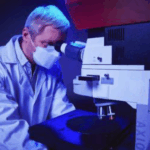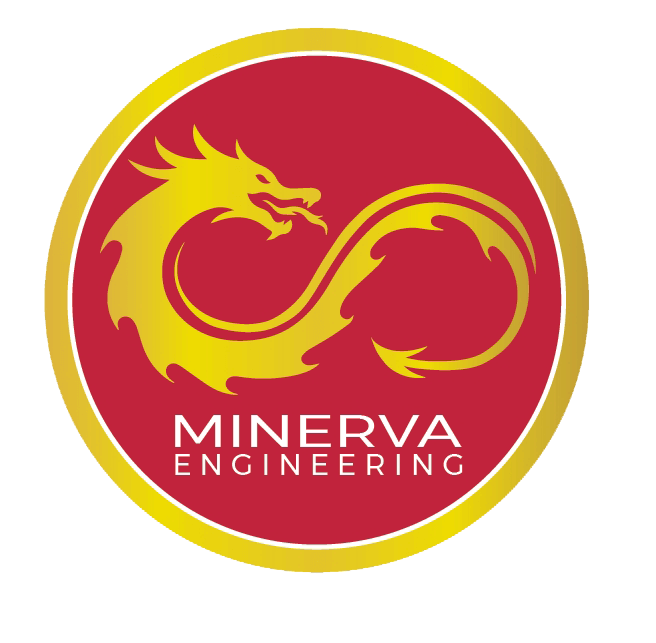Anti-reflective (AR) coatings play a crucial role in advanced optical technologies by significantly reducing unwanted reflections and maximizing light transmission. In micro-optical systems, even minor reflection losses can substantially degrade performance, making high-quality AR coatings essential. Their extensive application spans industries from laser technology and telecommunications to consumer electronics and augmented reality devices.
The Physics of AR Coatings
AR coatings utilize thin-film interference principles to control reflection and refraction. When light interacts with interfaces between materials of differing refractive indices, part of the incident light is reflected. AR coatings minimize this reflection through precise optical engineering:
-
Single-Layer Coatings: Typically made from materials like magnesium fluoride (MgF₂), these coatings have an optical thickness of one-quarter the target wavelength, inducing destructive interference of reflected waves.
-
Multi-Layer Coatings: Comprising several stacked thin films with varying refractive indices, these coatings reduce reflections across wider spectral ranges, critical for precision applications such as high-resolution imaging and laser optics.
Emerging advancements include nanostructured coatings, which leverage sub-wavelength surface features for broadband anti-reflection, independent of traditional interference effects.
How AR Coatings are Used
-
Laser Systems: AR coatings lower reflectance from ~4% to under 0.1%, minimizing energy losses and improving system efficiency and stability.
-
Imaging Equipment: Enhanced contrast and image clarity in cameras and microscopes through reduced ghosting and scattered light.
-
Consumer Electronics: Improved visibility of smartphone and tablet displays under various lighting conditions.
-
Telecommunications: Enhanced signal integrity in fiber optic networks by minimizing optical losses.
-
AR/VR Devices: Increased clarity and reduced optical distortion, significantly improving immersive experiences.
-
Eyeglasses: Reduction of glare, increasing comfort and visual acuity.
Tools Needed to Build AR Coatings
Producing AR coatings involves sophisticated deposition and characterization methods:
-
Thin-Film Deposition: Techniques such as sputtering and chemical vapor deposition (CVD) ensure uniform, durable coatings.
-
Spectrophotometry: Precise measurement of reflectance and transmittance validates coating performance.
-
Simulation Software: Software platforms like FilmPro™ optimize multilayer designs for specific performance criteria.
Manufacturing challenges remain, particularly around durability under conditions of humidity, abrasion, and thermal cycling, and achieving high laser damage thresholds across broad wavelength ranges from UV to IR.
Characterization of AR Coatings with Microspectrophotometry
We design microspectrophotometers that set a new standard for characterizing AR coatings on micro-optics. Our systems combine advanced optical technology with intuitive software, making them essential for nanotechnologies and optical coating engineers. Here's why.
High-Resolution Spectral Analysis
Our microspectrophotometers are capable of measuring microscale transmission, reflectance, absorbance, and fluorescence spectra with spatial resolutions down to one micron, ensuring precise performance evaluation across UV-visible-NIR ranges.
Non-Destructive Testing
Our systems allow repeated measurements without sample damage, essential for monitoring during coating development and for long-term stability assessments.
Thin-Film Analysis
Our reflectance and transmittance microspectroscopy tools analyze complex parameters like film thickness and optical constants with micron-level accuracy, enabling the identification of inconsistencies and helping fine-tune coating designs. Users can measure film thicknesses ranging from a few nanometers to several microns, making our tools versatile for diverse AR coating applications.
Polarization and Fluorescence Capabilities
Advanced polarization microspectroscopy combined with proprietary Lightblades™ technology enables detailed analysis of birefringence and anisotropic properties. Complementary fluorescence spectroscopy supports chemical characterization and contamination analysis.
Broad Spectral Range
Operating from deep UV (200 nm) to NIR (2500 nm), our microspectrophotometers cover a wide spectral range, accommodating coatings designed for specialized applications like solar panels, biomedical devices, and military optics. This flexibility ensures compatibility with a variety of industry requirements.
Advanced Imaging and Interface Analysis
Integrated high-resolution imaging with resolutions down to 0.5 microns provides comprehensive surface and interface analysis, identifying defects impacting optical performance.
Precision and Reproducibility
Our systems are engineered for exceptional reproducibility, which is crucial for quality control and comparative studies. Calibrated apertures and automated workflows ensure exceptional reproducibility, essential for rigorous quality control.
Future Directions
Emerging trends and innovations driving AR coating technology forward include:
-
Augmented Reality (AR) and Virtual Reality (VR): Demanding ultra-high-performance coatings that optimize optical clarity in lightweight, compact devices.
-
Self-Cleaning Surfaces: Integrating AR properties with hydrophobic and oleophobic functionalities to produce coatings resistant to water, oils, and dirt.
-
Sustainable Materials: Developing environmentally friendly, biodegradable coating solutions aligned with global sustainability initiatives.
Transforming AR Coating Characterization
Minerva Engineering microspectrophotometers represent a transformative approach to AR coating analysis. By providing unmatched resolution, comprehensive spectral capabilities, and advanced imaging, Minerva Engineering equips optical engineers and scientists to meet stringent demands across applications, from high-powered lasers to consumer electronic displays.
Discover how Minerva Engineering can enhance your AR coating characterization. Contact our experts to tailor microspectrophotometry solutions to your specific needs.


